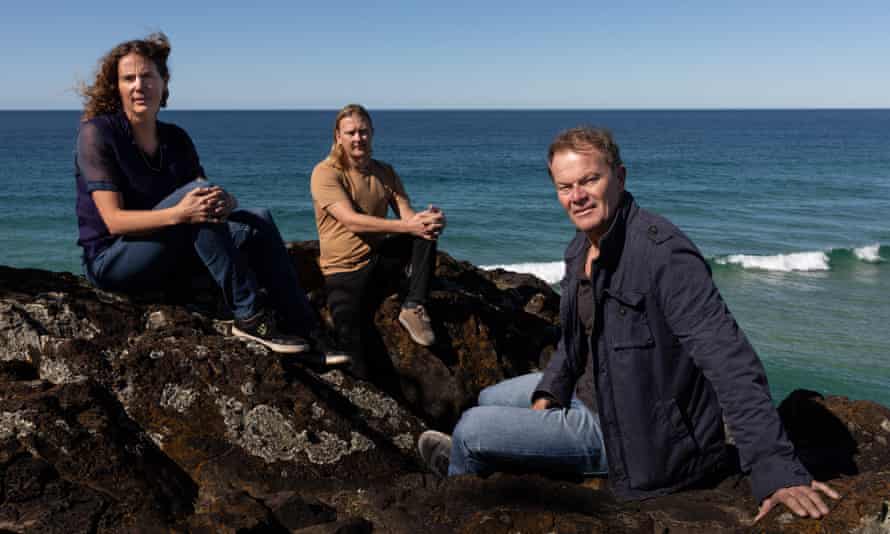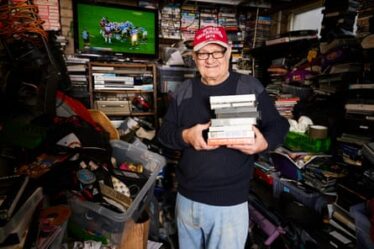
Steve Kudzius is not comfortable talking about himself. He would love nothing more than for this story to be told with only the most fleeting of references to his input. Better still, no mention at all.
The only problem for Kudzius is that without him and his heroics and his PTSD and his several-hundred-thousand dollars, there is no Rip Current Rescue International.
“One thing I know after decades in this game is getting funding for a project like this is so difficult, almost impossible,” says Gold Coast film-maker Jason Markland, who created a grassroots rip safety documentary following a drowning at northern New South Wales’s Fingal Head in 2016 and is now producing an international version thanks to the financial support of Kudzius, one of the key rescuers that day.
“It’s such a slog and that’s why it’s a blessing to have someone like Steve come onboard. He’s incredibly humble and reluctant to be pushed to the front of anything. He’d rather be behind the scenes but he understands people connect with his story.”
Kudzius’s story is filled with so many of the things readers connect with – drama and tragedy, heartache and hope.
On Good Friday 2016, half a dozen people rushed to the aid of a young family when their seven-year-old daughter was swept out to sea by a rip at the unpatrolled Dreamtime Beach. In chaotic scenes lasting up to 30 minutes, their bodies took a battering as they shielded Rihanna Milabo from jagged rocks and 2m waves.
Kudzius, a Fingal local, played a vital role by getting a boat in the water and rushing the girl and a rescuer to shore, where the latter was revived. He then returned to pick up another rescuer and retrieve the body of Ryan Martin, who drowned while saving the young girl’s life.
The 30-year-old’s death was one of several rip current tragedies that has impacted the small Fingal community. Watching from across the border, Markland launched a campaign to create what he says was the world’s first dedicated rip current safety documentary.
He teamed with rip current expert, Professor Robert Brander – AKA Dr Rip. He secured a production deal with National Geographic Australia. He then tracked down Kudzius and asked him to help bring the tragic events of Good Friday 2016 to life on the screen.

“I was apprehensive initially because the Martin family had lost a loved one and I wasn’t going to get involved unless we had their support,” says Kudzius, who has three young children and suffers PTSD in the wake of the drowning. “However, we met with Ryan’s brother and he gave us their blessing.”
Kudzius then had to face his own mental demons.
“Dealing with my memories of the day Ryan died is a rollercoaster,” he says. “Some days I’m good. Others I’m not. I’m on edge all the time when I’m around water and I don’t think that will ever go away.
“It rattled me to see the tragedy play out on screen but working on the doco forced me to face some things I needed to. It’s been a healing process and brought some peace knowing I’m playing a role in helping others avoid the nightmare we encountered.”
Silent killer
Rip currents are the number one coastal hazard in Australia, contributing to an average of 26 deaths each year, while 3.7 million Australian adults have been unintentionally caught in a rip.
“That’s a higher death toll than a lot of the natural disasters we get in Australia,” says Surf Life Saving Australia lead researcher Jasmin Lawes. “In the last five years we’ve seen evidence that more Australians are becoming aware of the rip current hazard … but research has repeatedly shown people are no good at identifying them.”
According to SLSA research, one in three Australian adults do not know how to identify a rip, while 56% are not confident in their ability to do so. In 2020-21 alone, Surf Life Saving volunteers and lifeguards performed more than 8,000 rescues around Australia, and while there was no breakdown of causes, Brander says there is no doubt most were due to rips.
“The sad reality is we’re an aquatic nation filled with people who can’t identify a rip,” says Markland, who has spent 30 years creating factual content for the likes of National Geographic and Discovery channels.
“When I heard about Ryan’s death, it struck me that I didn’t know how to spot a rip and I would have panicked like hell if I got caught in one. I wanted to change the conversation surrounding rips and that’s why this was the most important documentary I’d ever make. I knew it would save lives.”
Blending science with stories of survival and tragedy, Rip Current Heroes aired on National Geographic Australia, and was later screened by Qantas and Jetstar on domestic and international flights. Rip current study guides were also made available to every school in Australia free of charge.
Markland then set his sights further afield, seeking to produce a version for the US. Kudzius and wife Erin, whose company Pinnacle Scientific Australia supplies equipment to hospitals and laboratories, once again answered the call to arms.
“They began to see we could make a significant impact because there are so few rip current safety resources out there,” Markland says.
Having helped fund a short documentary for Curiosity Stream in the US, the couple then told Markland they’d fund a feature-length version.
“Steve looks like a laid-back guy but he’s a very dynamic entrepreneur,” Markland says. “He and Erin are the kind of people who say, ‘Shoot for the moon, don’t do anything small. Make it as big as you can imagine.’”
Going global
The resulting documentary, Rip Current Rescue United States, premiered on America’s biggest public broadcaster – PBS network – in May, taking in scenes from the Great Lakes to the beaches of Florida and California as it examined rip current safety in a nation that records up to 100,000 rescues each year.
The Kudziuses also funded the creation of a website, and are now supporting the production of Rip Current Rescue International, which sees Markland working with beach safety authorities in Mexico, South Africa, Costa Rica, France, the US, Brazil, the Philippines and the UK to bring the rip current safety message to the global stage.
All of which brings solace to the family whose loved one’s death has inspired the journey.
“Nothing can bring Ry back and that’s heartbreaking but knowing that what he did hasn’t been forgotten is really important to us,” says Josh Martin, whose brother’s heroics will feature prominently in Rip Current Rescue International.
“It’s fantastic to hear the project is going global. I’ve also stayed in contact with Steve and to hear he’s still dedicating time and funds to help save people is incredible.”
And what of the now-teenage girl who owes her life to his brother?
“Rihanna’s family has stayed in touch,” Martin says, apologising for his tears. “Sorry if I’m emotional but they reach out every year and send us photos of her, and to see her so much bigger reinforces what Ry did and shows that they’ve never forgotten him.”


